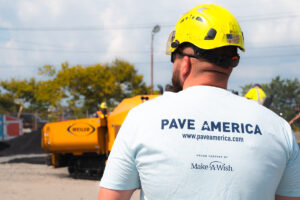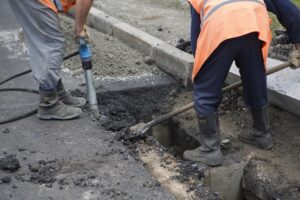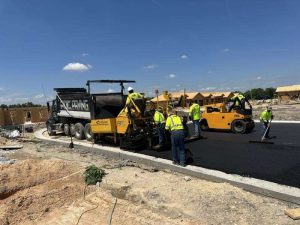When most people think of ancient cultures that built concrete structures, they typically think of the Romans. The Romans made extensive use of concrete for constructing roads, aqueducts, buildings, and other structures. You might not realize it, but concrete was a popular building material for several millennia before the rise of the Roman Empire. More than 8,000 years ago, concrete homes, floors, and cisterns were constructed in the Middle East, and 5,000 years later, the Egyptians and Chinese were also using concrete. The first concrete street in America was constructed in the 1890s, and concrete has been used extensively for constructing highways and streets ever since. Today, examples of concrete flatwork can be found in virtually every American town.
Common Examples of Concrete Flatwork
Basically, the term refers to any concrete installation that lies on a horizontal plane. By this definition, concrete companies that install sidewalks, dumpster pads, parking lots, foundations, patios, floors, and slabs are installing flatwork. However, walls and bridges are not considered flatwork.
Must All Concrete Flatwork Be Flat?
This is a question that many concrete contractors are frequently asked. No, some of the structures constructed by a concrete installer are not completely flat. For example, curb ramps, curbs, steps, stairs, and building ramps can be considered flatwork even though they are not as flat as a patio or floor.
Can a Concrete Repair Be Considered Flatwork?
Some concrete companies classify certain repairs as flatwork. For example, if a massive tree root has forced a section of a sidewalk out of position, the proper repair method may be to remove the uplifted or misaligned section, then install new concrete to replace it. Other types of repairs, including sealing cracks or mending a vertical wall, are typically not considered flatwork.
How Do Concrete Contractors Install Flatwork?
The precise steps will depend on the type of project, but there are certain basics that are commonly followed on most installations.
1. When installing concrete flatwork Austin contractors usually begin by assessing the soil at the construction site. Soil that contains a lot of clay may need to be amended, or the concrete installer may build a foundation out of compacted sand or gravel.
2. Next, concrete contractors will construct forms to hold the slurry in place while the concrete is drying. Forms are typically constructed out of wood and built at the site.
3. If the concrete needs to be reinforced, the contractor will install rebar or a wire mesh.
4. The concrete is then poured into the form. Care must be taken to ensure that the mesh or rebar remains in the proper position.
5. The final step is to finish the surface. Concrete can have a textured or patterned finish. Depending on the project, the concrete installer may use a broom, screed, float, or stamp to create the desired finish.
6. Forms are removed after partial curing has occurred. Depending on the thickness of the concrete, the weather, and the type of mix, forms may be left in place for as little as 48 hours or as long as three weeks. Typically, however, forms are removed in three to seven days.
When you need exceptional concrete installation or repair, you can count on RDC Paving. We serve residential and commercial clients in many Central Texas locations. In addition to concrete work, we offer asphalt paving, parking lot striping, driveway paving, asphalt crack repair, asphalt milling, customized parking lot maintenance plans, asphalt repairs, and asphalt overlays. We are known for consistently delivering exemplary service and extremely high-quality work in a professional manner. Interested in a free quote? Reach out today! You can submit our online form, or you can call 737-258-2608.




